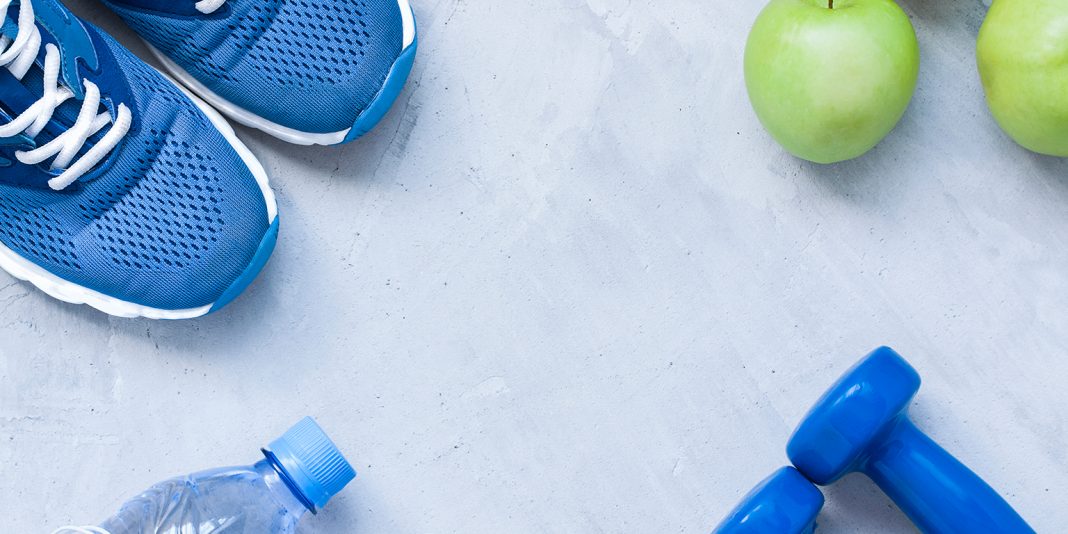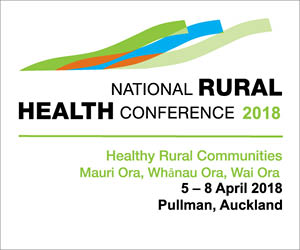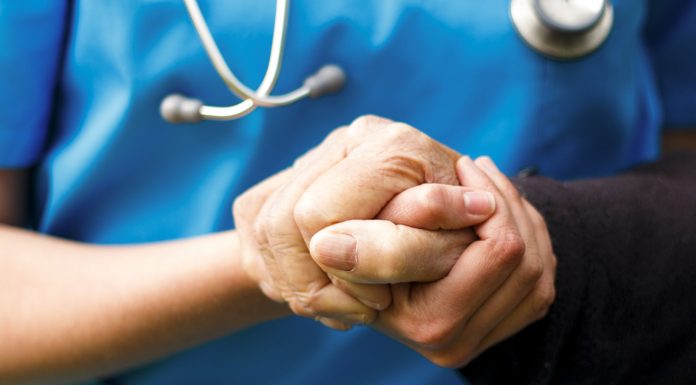Her face was getting bigger and her airway getting smaller when Manaia King went to Catriona Lawler, the nurse and manager of her new school’s health clinic.
She’d just started at Otahuhu College after moving to Auckland from Rotorua and now she discovered, in the worst way possible, that she was “allergic to nature”.
It’s the kind of situation that after the fact can spark a giggle – discovering stuff that is all around us, that sustains us, can kill. At the time, it couldn’t have been more serious.
King didn’t know it, but her life was in danger. But she didn’t have to wait for an ambulance, or make a fast trip to hospital in a teacher’s car. Help was right there. Literally, right there.
Because Otahuhu College is one of 174 New Zealand high schools, teen parent units and alternative education facilities that offer free on-site health services.
Tucked deep inside the grounds, behind the South Auckland school’s imposing brick frontage and towering palms, sit a couple of humble yellow prefabs. Inside, students can see a doctor, nurse, social worker or physio for free – and they did 6028 times last year.
The students come for a variety of reasons, but there’s no doubt the Health and Wellness Centre, staffed by part and fulltime staff, has saved lives.
Now in her final year at the school, 17-year-old King still remembers the fear and relief she felt the day her life was saved.
“Catriona came in with some injections. I got the adrenaline, then I got a blanket, [and] they had given me an asthma pump because I couldn’t breathe on my own. And then I went in the ambulance.
“It was very scary, but I was glad that I knew someone was at our school who knew what to do because I didn’t know what was wrong with me, besides that I was allergic to something.”
She isn’t sure what she’d have done if not for the centre – maybe run home for help, which sounds like an entirely bad idea for someone experiencing a life-threatening allergic reaction.
Instead, by the time the centre’s part-time GP Fionna Bell arrived, Lawler had saved King’s life.
“The anaphylaxis was full blown. She was struggling to breathe. But Catriona did an amazing job,” Bell says.
When someone can’t breathe properly, and they’re given medicine to make it better, it is obvious their life has been saved. That’s the pointy end of frontline teen healthcare.
But there’s so much more.
School-based health services aren’t a new thing. Otahuhu College has been running them for more than 17 years, in one form or another.
But what’s available varies by school.
Ministry of Health funding is channelled through district health boards, and in some areas – such as the Auckland District Health Board, in which Otahuhu College falls – that has extended since 2014 to paying for a part-time doctor.
In others, funding pays only for a nurse.
Other services, such as social workers and the provision of psychologists, depends on a school’s location and funding streams available to it.
At Otahuhu College, Lawler until last month managed a team made up of Bell, two full-time social workers, a part-time physiotherapist, two part-time nurses and two receptionists, also trained in first aid.
A new nurse manager, Juliet David, replaced Lawler this month after she took on a new role in school-based health services for the Waitemata District Health Board.
So advanced is Otahuhu – they’ve had a GP since 2000 after forging a relationship with Otara medical centre South Seas – that Ministry of Health staff informally consider the centre to be the gold standard for school-based health services, an official told the Herald on Sunday.
Lawler is humbled, but unsurprised by the accolade. “We had always had a doctor through South Seas and they saw how well it worked and thought, ‘Okay, we’ll do this in other schools’.”
Information provided to the Herald on Sunday by the ministry describes school-based health services as focusing on early intervention for teens, and allowing easy access to youth-friendly services students can trust are private and confidential, within the standard confidentiality limits related to harm.
The programme is targeted by decile, with funding for decile one to decile three secondary schools, teen parent units and alternative education facilities.
Most students’ first interaction with the service is a private and confidential psychosocial assessment done when they start secondary school.
The assessment is known by its acronym, HEEADSSS, derived from the series of questions asked of each student relating to home, education/employment, eating, activities, drugs, sexuality, suicide and depression, and safety.
From there health problems can be identified and treatment organised.
Schools are able to decline school-based health services, but based on ministry figures – estimated according to the Ministry of Education’s latest school roll numbers – most don’t.
In July, it was estimated almost 60,000 students were being reached by the services, out of the just over 64,000 who are eligible. More than half attend decile one or two schools.
About 25,000 students from decile three and above schools are also recipients, with some schools that have moved out of the lowest three deciles continuing to be funded.
Health responses to support students in mid-to-high decile schools are determined locally by district health boards, primary health care organisations and school boards of trustees, according to the ministry.
But is that enough?
The Labour Party announced in May its health policy would extend school-based health services to all public high schools, at an annual cost of $40 million.
The party’s then deputy leader, Jacinda Ardern, now Prime Minister-elect, said at the time all young Kiwis should “get the help and support for all their health needs, particularly mental health”.
New Zealand has the worst teen (15-19) suicide rate in the developed world, a shameful statistic highlighted by the Herald‘s Break the Silence suicide awareness campaign in July.
Depression and suicide risk were up to two-thirds lower in schools with comprehensive health services, Ardern said at the time.
“Early intervention works.”
Under Labour’s policy the average high school would have a full-time nurse and the support of a GP, she said.
For its part, National’s $100m social investment fund for mental health, announced in August, included a schools package that included initiatives such as a pilot scheme to provide frontline mental health staff in schools and teaching specific social and emotional skills, including those related to self-control and resilience.
So what does teen healthcare look like on the front line?
Embarrassing bodies, suicidal thoughts, period problems, skin conditions, breathing issues, sexual health, palpitations – often anxiety related – and sleep problems, often linked to an undiagnosed mood disorder, but sometimes due to gadgets over-riding shut-eye, are all things she sees, Bell says.
“I just see general practice stuff in this age group,” she says of the 10 hours a week she spends at the school.
That goes for the challenges of providing healthcare to those living in poverty – which she describes as every one of Otahuhu College’s 1005 pupils.
“It’s the whole school. That’s why we’re decile one. I also work at a decile three school and it’s incredible the parental resourcing … the fact that young people have money in their pockets and are like, ‘Yeah, I’ll go pick up a prescription’.
“Even the health literacy of the young people is different. Whereas here there’s no breakfast, there’s no lunch … and teens will protect the younger kids, they’ll let the money go for the little kids’ [food and healthcare].
“So even though they’ll have a health need they’ll be going: ‘Is it important enough for me to ask for $3 for the prescription’?”
And these are kids from working families. Their parents have jobs, but high rents are swallowing up much of the household income, Bell says.
Meetings between centre staff and school leaders help identify students showing signs of distress, such as acting out in class or wagging.
Intervention – usually through a HEEADSSS assessment – can be revealing.
“[With one boy we found out] there are 10 people living in a motel room, and there’s not enough food and he’s got a runny ear but no one can afford to take him to the doctor and he’s not getting enough sleep.
“So of course he’s not doing well in class.”
A number of school families were in emergency housing, but made sure their children got to school every day, she says.
“What people are doing to try to get their kids to a stable education – it’s really impressive.
“But the rental affordability [is an issue] … this service is our way of getting young people to be as healthy and well as possible and to get hold of this education, because then after that they can determine their economic security.”
A big part of her job is also to enable the centre’s nurses to do as much as possible without a doctor being around.
So, for example, if a throat swab shows a student has strep throat, the nurse can get them on antibiotics straight away.
Last year 209 sore throats were swabbed and 42 confirmed to be infected with Group A Strep, a bacteria that can lead to rheumatic fever, a serious illness that can scar heart valves and lead to early death in adulthood.
According to Ministry of Health figures, 137 people nationally were diagnosed with rheumatic fever in 2016, down from 177 in 2012.
None diagnosed last year were from Otahuhu College.
If Bell and the rest of the centre’s team are the circulatory system that helps deliver care to students, Lawler’s role is being the beating heart that keeps everything pumping in the right direction.
She has heard students say they know they need to see a doctor, but there’s no one to take them. Or revealing in the HEEADSSS assessment that they have been sexually abused.
“They tell you. [They say] that no one’s every asked them before.”
Speaking to the Herald on Sunday before moving to her new job, Lawler says she is disturbed when there are hints of any service reduction, such as the possibility social workers may be moved off-site. The service works best when everyone is in the same place, she says.
She knows what they have at Otahuhu is pretty special. “We carry everything here that you get at a GP practice, which is different from the non-health-funded schools. The schools that aren’t funded through that health contract, the nurses just do first aid.”
Mostly she is just pleased they’re able to do something for young people that will continue helping them a lot longer than the few years they’re at high school.
“What we’re trying to do is teach these guys when they need to see a doctor, a physio, a nurse, a counsellor. That’s a lifelong skill.”
And it goes beyond the individual futures of those who come through the health centre’s doors. There is also a focus on encouraging those who want their lives to also be about helping others.
Students aren’t just learning valuable life skills about managing their own health in the little yellow prefabs. They’re also seeing that not only can you receive healthcare, you can also give it.
“We’re really big on trying to get people into health sciences and in year 9 and 10 they’re doing extra science classes, at this school, because we want to get people into it,” Lawler says.
“They can see what it’s like.”
Lawler has been trying to persuade King to become a doctor. Next year, the teen will study human anatomy and social science at Waikato University.
“How many other people have been to university, in your family?” Lawler asks King, for the Herald on Sunday‘s benefit.
“None,” King says.
It could all have been so different.
Good health keeps kids in school and gives them the oomph to work hard and turn their dreams into reality.
Because, on their own, dreams aren’t always enough.
They can’t make sure there’s someone at your school who can save your life in an emergency, and they can’t help you manage a health condition and all the other challenges in your life.
But an entirely sensible service, such as a health centre at a place frequented by vulnerable young people, that can make a difference.
The proof is sitting in front of Lawler, smiling shyly.
“It might have been in another school she’d have got sick, she’d have missed lots of school,” the veteran nurse says of the young woman she first helped all those years ago.
“She wouldn’t have done so well, you know?”
WHERE TO GET HELP:
If you are worried about your or someone else’s mental health, the best place to get help is your GP or local mental health provider. However, if you or someone else is in danger or endangering others, call 111.
If you need to talk to someone, the following free helplines operate 24/7:
DEPRESSION HELPLINE: 0800 111 757
LIFELINE: 0800 543 354
NEED TO TALK? Call or text 1737
SAMARITANS: 0800 726 666
YOUTHLINE: 0800 376 633 or text 234
There are lots of places to get support. For others, click here.





















